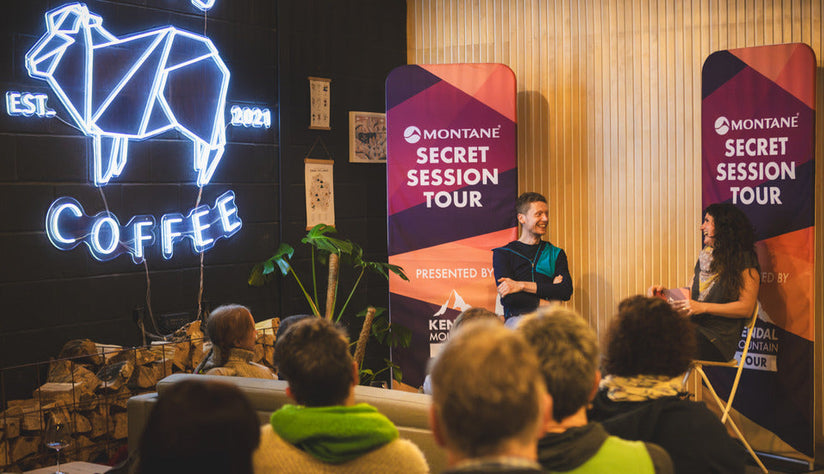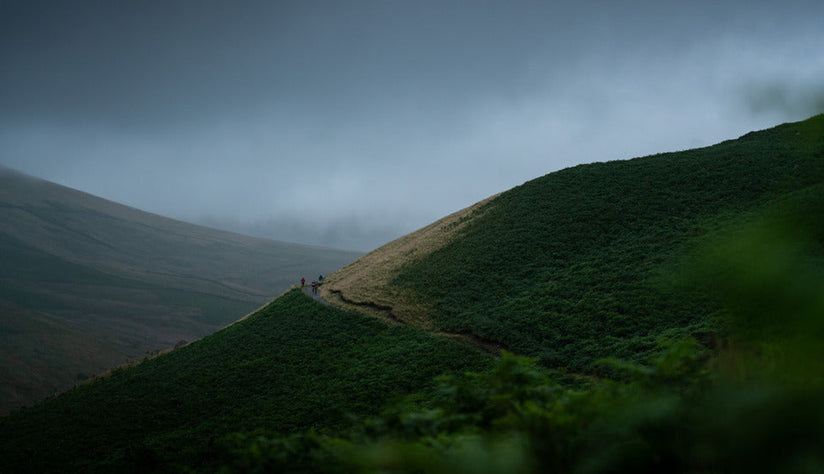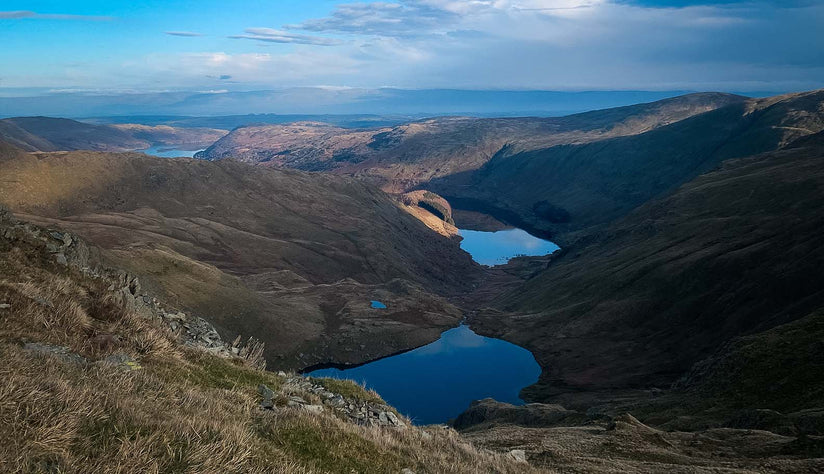As part of our aw22 Find Your Unknown campaign, we tasked adventurous photographer Hamish Frost to capture pro mountaineers in action taking on the epic landscapes of Scotland's mountains in winter. Challenge eagerly accepted, keep reading to find out how he fared against the elements...
Gusts of wind violently shook my van from side to side as I drove through the darkness up the steep hairpins to the Coire Cas car park in the Cairngorms. It was the extreme end of the forecast that I’d half hoped wouldn’t materialise, and I knew we were going to be in for a hard day on the hill as a result. We were there to capture imagery of some of Montane’s latest winter range.
The brief had asked for stormy conditions, showing the protagonists climbing in the kind of challenging weather conditions that a day out during the Scottish winter can often entail. There’s a fine line, however, between the kind of stormy conditions you can shrug off and conditions where it becomes dangerous; even simple tasks become a real battle. That day, I knew we were going to be in for a fight.

The allure of Scotland in winter
I’ve been fortunate enough to work on projects in places such as Antarctica, the Himalaya and the Alps. Scotland, however, has a unique appeal that still excites me more than anywhere else. When I was starting out as a photographer, I remember reading that a good adventure photo should make you, as the viewer, either want to be there or be anywhere but there.
In the winter months, the Scottish Highlands provide ample opportunities to capture either of these sentiments in an image. Although the mountains in the Highlands aren’t nearly as big as in other parts of the world, what they lack in size, they more than make up for in wildness and seriousness.

During winter you can go out and have a full-on, intense mountain experience and be back home in time for tea. There’s a mentality of going out even when the weather’s bad, something which is generally avoided in bigger, more committing mountain ranges like the Alps and the Himalayas. In Scotland, however, you simply stick your big down jacket on, head out and get on with it. This often leads to climbing routes in conditions many would consider insane. Gusts of wind whipping snow up from below whilst spindrift pours down from above. Although uncomfortable to work in, these conditions translate well on camera, adding drama and a sense of discomfort to an image.
Freezing temperatures and unyielding elements
The plan was to head up to the exposed Fiacaill Ridge in time for sunrise, however, upon walking towards Coire an t-Sneachda and seeing a jet stream of spindrift blowing off the ridge, we changed plans, opting instead to stay somewhere at least vaguely sheltered from the 60mph+ winds. The Coire had been completely scoured by the winds. Any fresh snow stripped and deposited far to the east, leaving only sheet ice remaining. Rime quickly formed on anything in the path of the wind. Clothing, hair, skin.

Winters here can be particularly ephemeral, with temperatures normally hovering just above or just below freezing level. Much of the winter is spent pouring over weather charts and forecasts, trying to build up a picture of how conditions are forming and trying to work out where and what might be in. It almost becomes a bit of a game - do you go somewhere you know there’s likely to be reliable conditions, or do you take a gamble and go somewhere more out there? Sometimes the gamble doesn’t come off, and you might journey all the way to a remote cliff, only to find it out of condition, but the potential rewards of snatching a route that rarely comes into condition usually provide ample motivation to roll the dice.
I find the creative process of trying to produce exciting images in challenging environments particularly appealing. You’re dealing with a host of challenges you wouldn’t encounter in other genres of photography. If it’s cold and wet, then you’re fighting the conditions, trying to keep yourself and your camera kit working. If the best angle for a shot is half way up a cliff, then you've got to work through the logistics of getting to that position safely.

To add to all that, you need the fitness to haul lots of camera and climbing gear around and stay motivated to keep pushing that shutter button even when you’re tired, scared and would probably rather be anywhere but there. So, what’s the upside? The feeling of satisfaction you get sitting down at the end of a hard day out in the mountains, exhausted, but knowing that you’ve come away with a decent set of images. It’s a feeling I don’t think I could get doing any other job in the world and it keeps me coming back for more.
Capturing the ultimate shot
The best images regularly come from situations where you’ve gone the extra mile, whether it’s getting up earlier to be on location and out shooting at sunrise, or simply getting your camera out and running ahead of the athletes to capture a natural, unscripted moment. Sometimes, however, it’s a case of involuntary discomfort. For instance, weather that has turned foul or some unforeseen event that’s made the situation you’re in more serious.

I’ve learnt a thing or two about how I respond when faced with these situations. There’s a part of my brain that thinks ‘yeah this isn’t exactly fun, but it would be even worse if I didn’t get something good out of this, so let’s put the effort in to make it happen’. If I think back to the shoots I’ve worked on, many of those that were the most successful were on days where I was outside of my comfort zone. Many were either stressful, scary, exhausting, damp, cold, sleep-deprived, or a combination of all of these. There’s a classic mantra in climbing photography related to this - the best images result from the situations where you least want to get your camera out to take a photo.
Bodies huddled together on a belay, spindrift pouring over hoods, a grimace spreading across someone's face as they fight the hotaches. These images don’t allow for misinterpretation, winter climbing is hard, both mentally and physically. If you want to be part of it, you should be prepared to suffer!

Winding along the dark, slick roads towards the west coast, Ben Nevis and the second day of the shoot. Memories of frozen digits and awkward spindrift already melting away as the heater in the van blasted hot air around me. As expected, the day had contained lots of unknowns and had required an adaptable approach, positive mental attitude and some really good Montane kit.
I smiled to myself as I pictured a similarly testing day tomorrow, the draw to keep going back into the elements day after day is often hard to describe. I was pleased with how the day had gone and despite the intensity of the elements, we had come away with images which I felt fitted the brief. The day had been one of the more testing I’ve had on the hill as a photographer. Once again, Scottish winter had provided everything we needed to push ourselves into the unknown and come away wanting more.
Feeling Inspired?
Photographer Hamish Frost joined us in the Scottish mountains as part of our AW22 find your unknown campaign. For those eager to explore this challenging environment, take a look at our range of protective, durable winter climbing kit to get suitably prepared - featuring warm, technical fleeces and guaranteed-to-keep-you-dry GORE-TEX waterproof jackets.



















